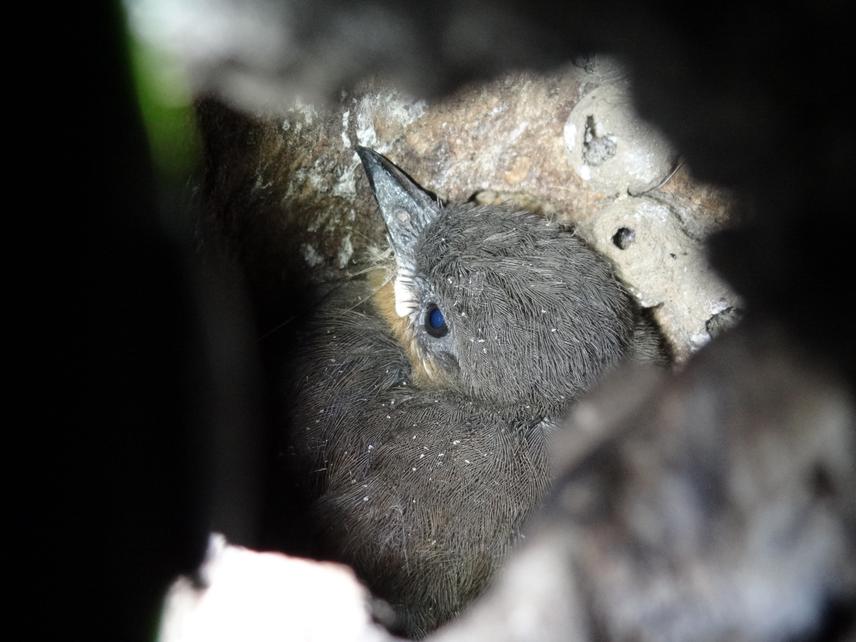Sergio Nolazco
Other projects
The aim of the project is to provide baseline empirical evidence and understanding of human land alteration effects on biodiversity to inform authorities and local people about integrative conservation strategies.

Rufous flycatcher nestling in trunk cavity one day before going out of the nest.
Equatorial dry forests integrate into a unique biome exhibiting a high diversity of endemic species restricted to southwest Ecuador and northwest Peru. Unfortunately, the growing rate of landscape alteration due to human activities are reducing and fragmenting this valuable ecosystem. Uncontrolled wood exploitation and unsustainable agricultural/farming expansion are the main causes of deforestation. Lowland dry forests are becoming the most vulnerable systems due to closeness to large, growing cities and accessibility by roads.
This project considers bird assemblages as biological indicators of ecosystem degradation since they are highly sensitive and functional diverse. Bird surveys are designed to collect qualitative and quantitative data based on standardized and non-standardized field techniques: modified McKinnon species lists and chance encounters (bird presence and evidence of specific bird activities). Mature secondary forest, young secondary forest, arboreal/shrub agricultural land and herb cultivated land are going to be surveyed to analyse the resilience of guilds and species for each type of alteration.
Bird assemblage structure and composition are going to be evaluated to determine sequence and direction along land modification gradient. We expect to identify bird guilds and species sensitivity differences resulting from land modification and reach a level of resolution that allows us to identify particular field crops which exhibit an avifauna closer to a mature forest. Having enough evidence on functional connectivity rather than just hypothetical connection effectiveness based on structural connectivity allows efficient application of conservation strategies that can involve an integrative view between typical economic activities and preservation of wildlife. Findings are going to be published in a scientific journal, but also a technical report in mother tongue and presentations for district authorities and schools inside and around the study area will be prepared. These will integrate technical results in an easily understandable expression to help decision taking and change local people’s view of their environment.